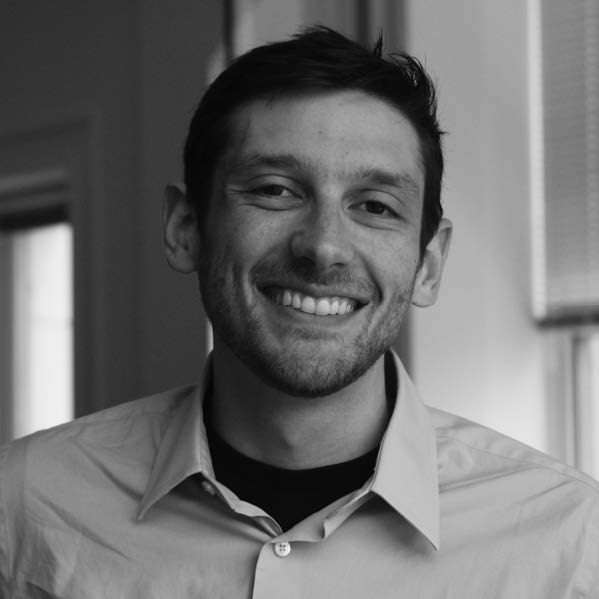
School of the Arts, Media, Performance & Design (AMPD) Professor Gabi Schaffzin has a goal: eradicate the fear that design students feel when they hear the word “coding,” while teaching them that they have alternatives to the biases built into the algorithms that govern the standard digital design programs used in the industry.
When it comes to those in his third-year generative design course, Schaffzin has noticed something. “One of the challenges of the class is that only about one of 10 students is comfortable with coding,” he says.

Schaffzin wants his students to lose their fear of basic coding, with its loops, variables, functions and if statements, but he also wants “to challenge their assumptions about code being unbiased. For example, who decided that something should be in English or to always place a certain button in a specific spot on the page?”
Schaffzin does a lot of work with user interfaces and data-generated visualization, which can be lucrative, but he wants his students to know that, as artists and design professionals, they have options besides the programs that are automatically assumed to be the only choice for generating designs online.
“I want to to challenge many of the assumptions that are often baked into the design process,” he said. “A class like this provides students with marketable skills, while also being introspective and canon-challenging.
“By exploring user interfaces using code, rather than pixels, designers start to understand how the choices they make about their users’ experiences are strongly related to the digital technologies used to build them.”
In other words, there are people behind the algorithms that design programs use and these people are making choices designers simply take for granted.
Schaffzin asks students take on the task of learning p5.js, a creative coding library and platform that has the goal of making coding accessible to a wide variety of people. Their text Aesthetic Programming combines theory and practice and provides weekly exercises for them to complete as they familiarize themselves with the code and learn to use it to create designs.
Once they have become conversant with p5.js, they are asked to print their final design project using a Risograph, an automated version of screen printing that produces images that are less precise than those created with digital printing.
“They are used to doing highly curated design using pixels and this [the Risograph] is an imprecise technique – it produces fuzzy edges, not the crisp ones made by a digital printer – that creates a lovely sense of the artist being present,” Schaffzin says. “In a world of artificial intelligence, anything reminiscent of this is something in its favour.”
By understanding that they have choices, rather than blindly using the most common technology, Schaffzin says students “are encouraged to bring a critical eye to each project they undertake going forward, both in the design program and beyond.”
April Dang, a third-year graphic design student who enrolled in the generative design course in Fall 2023, has felt that impact. “Using p5.js, I can make things with data manipulation that I normally couldn’t as a designer … It broadens my scope.”
She was thrilled to learn how to create dynamic type and images using code rather than a mouse or a trackpad. However, debugging her programs took time.
“I needed to go through 100 lines of code to see what I’d typed wrong,” Dang said. “It was frustrating, but the end result was very satisfying, and it taught me to embrace mistakes. It’s important to treat them as a learning experience, because failures may look cooler than expected.”
Dang has a summer internship lined up with a local graphic design firm and is hoping to put her new skills to use there.
It’s an attitude that Schaffzin heartily embraces as part of AMPD’s mission that “infuses every level of practice with critical thinking and social critique.”
“Although my students won’t turn into programmers in 12 weeks, I want them to recognize the inherent bias in our technologically-determined lives,” he said. “And from a professional standpoint, I want them to feel comfortable interfacing with tech people.”
If Dang is typical of the students who finish the course, mission accomplished.
